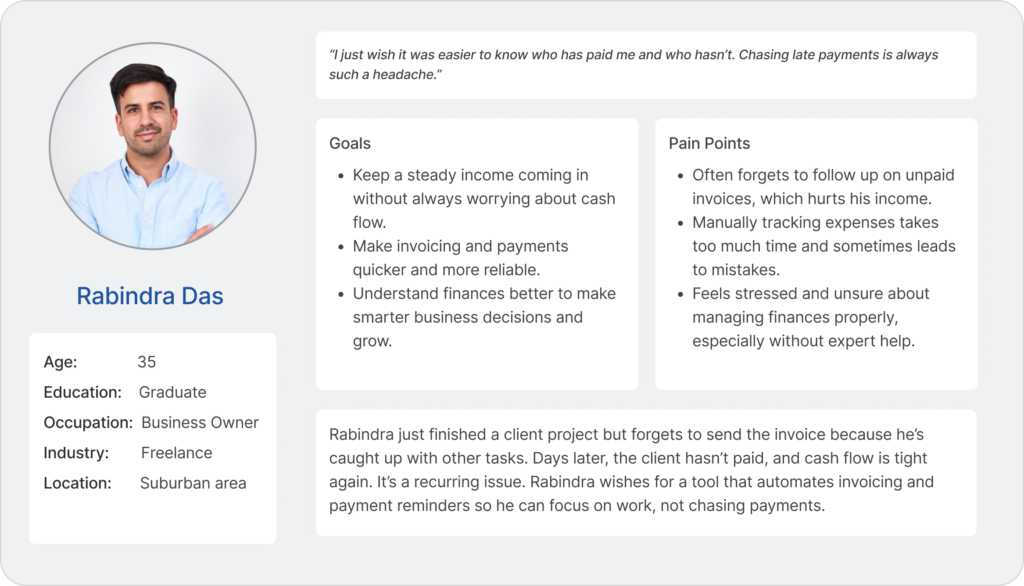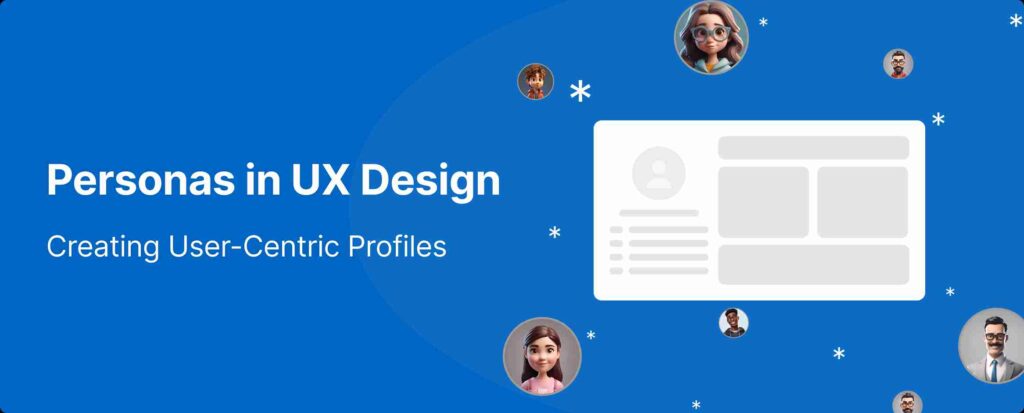Have you ever thought about why some products just “click” with users, and some products feel totally wrong?
The difference often comes down to the designer’s understanding of user needs. This is where personas come into play.
Creating personas is not just a research deliverable — it’s a mentality.
Designing with real users in mind allows you to create more intuitive, accessible and effective digital experiences. NNG (Nielsen Norman Group) on Personas
What Is a User Persona?
A user persona is a fictional character you create based on real user data, behaviors, and goals.
It serves as representation for one key segment of your audience, which in turn will help with your design decisions. HubSpot – How to Create Detailed Buyer Personas
A user persona includes
- Demographics: age, job, income, education, where they live
- Psychographics: interests, values, motivations, behavior
- Goals: functional and emotional goals with product
- Pain Points: frustrations / problems the user is having
- Scenario/User Story: A short story about how the user interacts with your product in ‘the wild’
Why Personas in Design?
Designing without personas is like writing a book and not thinking about who your characters are.
Personas help you in
- Build empathy with users
- Unify your team on authentic user goals
- Create content and features that are targeted
- Make design decisions with clarity and prioritized
For example:
Many small business owners don’t have a good hold on their finances – tracking their expenses, making payments when they’re due.

Type of Personas
Here’s a summary of the most useful persona types and when to use each one:
- Segment-Based: Personalization, Marketing efforts, Targeting content
- Goal-Directed: Feature prioritization, Journey mapping
- Role-Based: Enterprise tools, Multi-role dashboards (admin vs end user)
- Engaging Personas: Stakeholder presentations, Story telling in design reviews
- Fictional Personas: Early brainstorming, Conceptual design ideas
- Adaptive personas: Real time personalization, Evolving user models
- Journey-Based: Mapping user lifecycle stages, Onboarding flows
Where to Use Personas in UX Workflow
- During user research: Identify key principles and patterns across interviews/surveys
- In content strategy: Tailor tone, structure and topics to the needs of the persona
- In UI/UX design: Map out user flows and pain points
- In usability testing: Run test tasks based on persona behaviors
- In stakeholder communication: Align team members around common user goals
Tips for creating effective personas
- Use real data: Confirm with surveys, interviews, or analytics
- Keep them visual: Use icons, images, and feature quote highlights
- Make them actionable: Connect them with user journeys and features
- Keep them alive: Update as you gain new feedback
Conclusion: Make Personas Your Big UX Advantage
User personas are not fluff – they are building blocks for good design.
They help you prioritize what is most important to your users and close the gap between data and empathy.
The next time you start a project ask yourself:
Who am I designing for?
And if that answer is not absolutely clear, go make your persona.
Also Read
Design Psychology: Unlock the Secrets of User Minds
Discover how psychological principles influence user behavior and how to use them to create more intuitive and engaging designs.
UI Design Practices That Actually Work
Learn actionable UI techniques that improve usability, reduce cognitive load, and make your interfaces more user-friendly.



Nice , Informative
Pingback: Do’s and Don’ts in UI design
lobbyster
Your prose exudes warmth and presence. It creates a sense of dialogue, as though the words themselves are companions walking alongside the reader.
Your words carry a meditative rhythm, flowing with quiet strength. They invite the reader to linger, to pause, to breathe more slowly. In that space, meaning becomes clearer, and presence itself becomes the gift.
Your writing unfolds like soft currents, where ideas and feelings flow seamlessly. Each sentence supports reflective reading, contemplative immersion, and nuanced understanding.